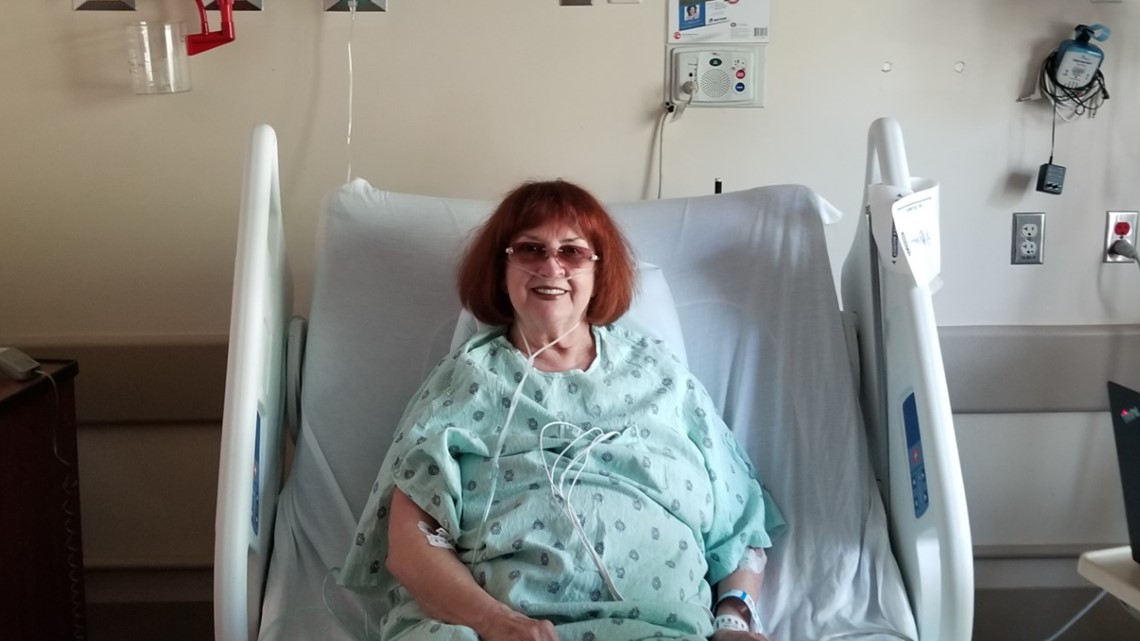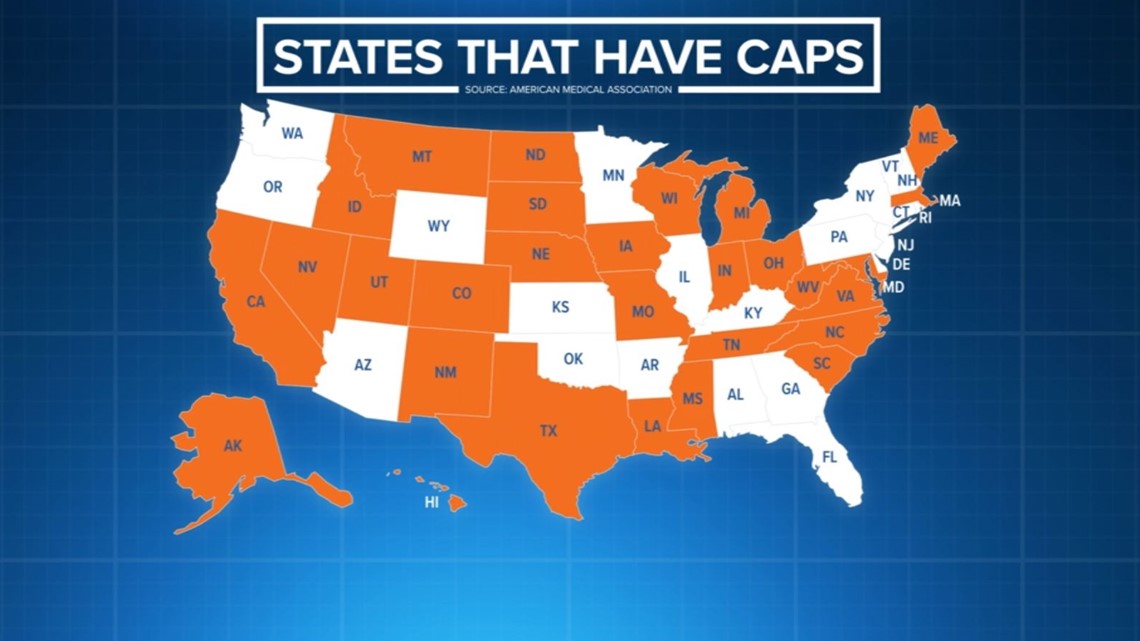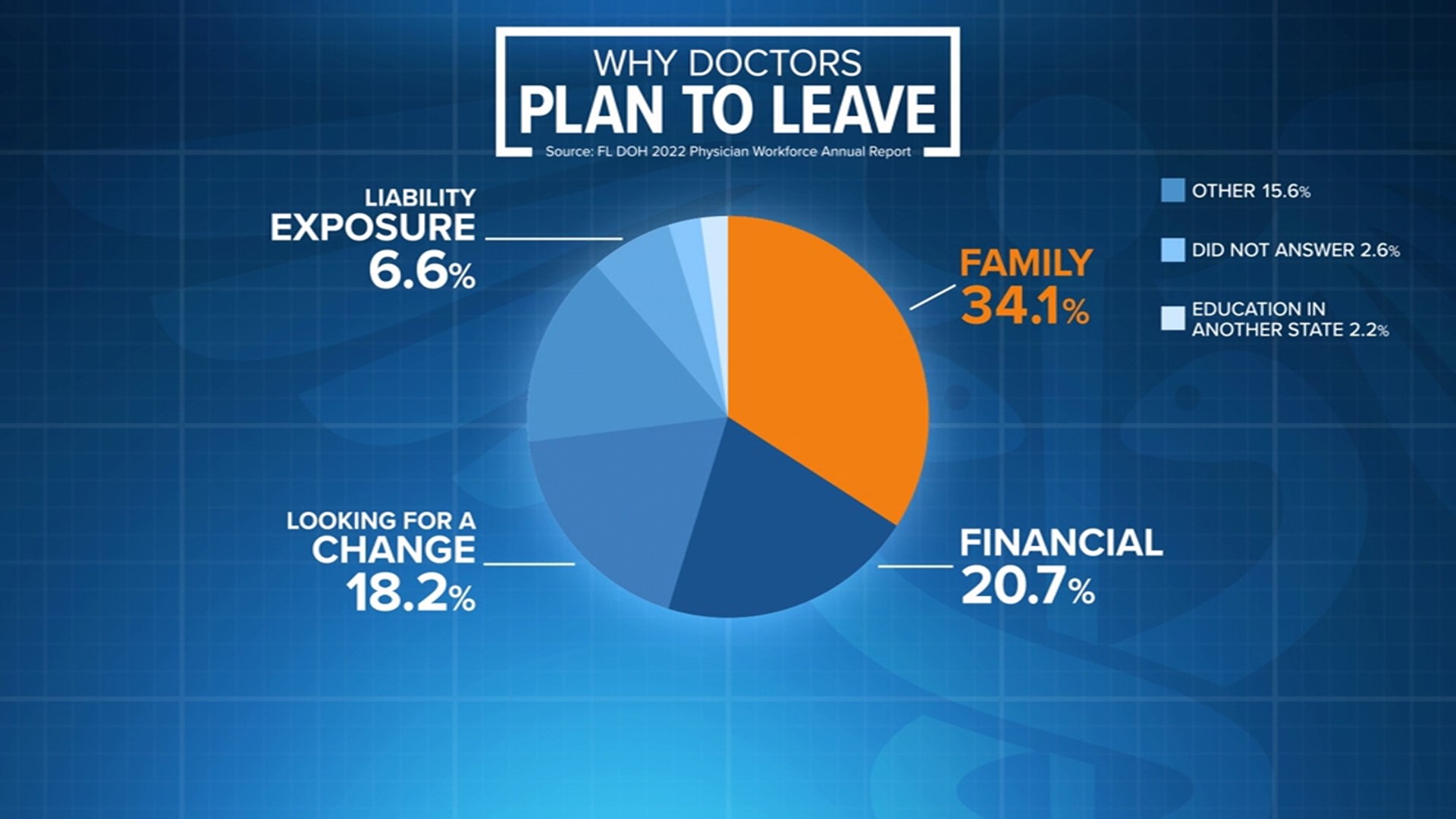TAMPA, Fla. — For Travis Creighton, visiting mom used to mean taking her out to lunch or going shopping.
Now the only way to visit is to go to her gravesite in Tampa.
“It’s a bond that never goes away. You never stop loving your children. You never stop loving your parents," Creighton said.
After Jeraldine Creighton had a heart attack, her son says staff at a Tampa hospital faked part of her chart, claiming they checked on her and gave her treatment when they didn’t.
“Right after the death, I started looking at my legal options,” he said.
He said he called dozens of lawyers and none of them would take his case — not because he didn’t have legit concerns over her care — but because his mother was a widow and had no children under age 25.
“It’s ridiculous. And people don’t know this until they come across it through tragedy,” he said.


In December, 10 Investigates told you about a push to change this part of Florida’s Wrongful Death Act, which limits who can sue over a death from medical malpractice.
If you are 25 or older, unmarried or widowed, and have no children under the age of 25, you’re what critics of Florida’s law call a “free kill.”
If that’s you, subsection eight of Florida’s Wrongful Death Act says your loved ones can’t sue the doctor or healthcare facility for mental pain and suffering damages.


Florida lawmakers filed five bills this session to fully or partially repeal that restriction on who can sue.
But only one is making progress: Senator Clay Yarborough’s SB 248.
If it becomes law, Florida’s so-called “free kill” law would go away. Anyone would be able to sue over their loved one’s suspected medical malpractice death. But it would add caps on pain and suffering damages for anyone who sues over wrongful deaths or injuries caused by medical malpractice.
“Because we have not seen enough support in the legislature to just do a clean repeal, I believe we had to look at another avenue to try to thread the needle and strike a balance,” said Yarborough, a Republican representing Dist. 4, which includes Nassau and Duval counties.
Supporters say if lawmakers increase the number of people who have the option to sue, the caps are a necessary compromise to keep doctors’ liability insurance rates from skyrocketing.
“If we are going to expand the universe of claimants in the state of Florida, there must be some countermeasure, some counterbalance that is going to provide fairness and balance in the civil justice system,” said Ybor City attorney Andy Bolin, who has been representing Florida doctors and hospitals for decades.
Maitland medical malpractice lawyer Clancey Bounds, who represents patients and their families, called it “political horse-trading.”
“We're going to give a right, but we're going to take away a lot more rights,” Bounds said. “The horrible irony of caps is they are going to hurt the most the people that are hurt the most and have the greatest loss. And that's why they're not fair.”
Patients and their families would be limited to recovering a max of $500,000 in pain and suffering damages from a medical practitioner.
That gets bumped up to a cap of $750,000 for medical facilities like hospitals.
Those caps get hundreds of thousands of dollars lower if that malpractice happened during emergency care or if the patient was on Medicaid.
“We're essentially saying your pain and suffering is worth less because you're [economically] worth less in our eyes, right?” Bounds said.
The bill would not add caps on economic damages like medical bills, funeral expenses, and lost wages.
So, do Florida doctors have a hostile medical malpractice environment?
Court data shows these cases don’t happen that often in Florida. A Florida Office of the State Courts Administrator report shows people filed 1,295 medical malpractice claims in circuit courts last fiscal year. That means medical malpractice made up 0.5% of all civil claims filed.
According to the Florida Office of Insurance Regulation, overall medical malpractice premiums have increased 6% since 2004.
That’s an insurance rate increase Florida homeowners can only fantasize about.
Florida would join 29 other states that already have caps on medical malpractice damages, according to the American Medical Association’s count.


So, are caps effective at keeping doctors’ liability insurance premiums low in those states? Not necessarily.
The AMA's most recent list of states with the largest increases in liability premiums shows that 10 of those 15 states already have caps on damages in medical malpractice cases.
We asked the AMA in an email, “If so many states with the biggest rate hikes have caps on damages, why are caps a strategy that the AMA supports to reduce liability insurance premiums?”
An AMA spokesperson responded, “The stronger the cap, the more effective it can be. There is wide variation among states with caps on medical liability damages, but states like California and Texas with strong medical liability caps are benefiting from a long period of stability in medical liability premiums and improved access to care.”
Texas added caps on pain and suffering damages in 2003 – more severe caps than the ones Florida is considering: $250,000 caps per claimant in a judgment against a doctor or healthcare facility.
“I personally know Florida-born, Florida-educated doctors that are now practicing in Texas because we have a better liability environment,” Brian Jackson told the Florida Senate Judiciary Committee on Jan. 22, representing the Texas Alliance For Patient Access.
Although Texas still ranks in the bottom 10 states when it comes to physicians per capita, the number of active physicians in Texas increased after adding caps – growing by 45% between 2007 and 2021, according to data from the Association of American Medical Colleges.
Emergency room physician Dr. Sandra Williams told 10 Investigates she was one of those doctors who moved to Texas, despite her deep roots in Florida.


“I went to elementary, middle school, high school, college, medical school, I did my intern year [in Florida]. Like, that’s where I’m from,” Williams said.
She said the liability climate in Texas was her number one reason for moving there.
“I’m a single parent with a small child and I would love for her to live near her grandparents, her aunts, her uncles, her cousins. But we live here in Texas without any other family because of this. So, I would love to move back to Florida, but I want it to be a safe place for me to go, for my career,” said Williams, who is also President of the Texas College of Emergency Physicians.
Travis Creighton told 10 Investigates he wants everyone to have access to the court system, but he doesn’t think caps are the right compromise.
“This has occupied every day of my life since she passed,” Creighton said. “Every day of my life, I’ll fight this. Until it’s gone. It’s that important.”
A 2022 Florida Department of Health report says nearly 5% of physicians surveyed said they plan to leave Florida in the next five years. Their top reason for leaving was “family.”
Fewer than 7% blamed “liability exposure.”


